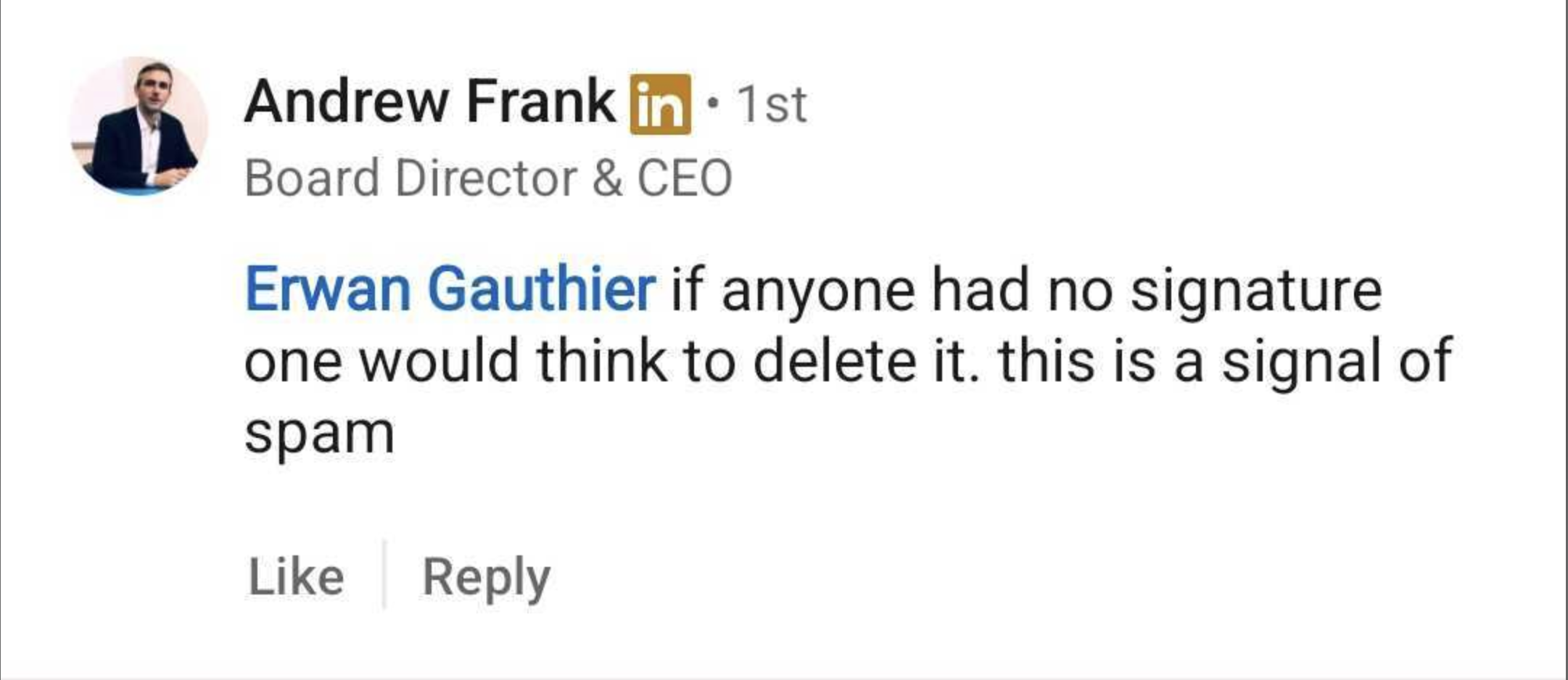

One often-overlooked element that plays a crucial role in building trust and professionalism is your email signature.
A strong, well-crafted signature can significantly impact how recipients perceive you and your message. Here's why signatures are important in cold emailing and how to make yours work to your advantage.
Cold emails are unsolicited by nature. The recipient doesn’t know who you are, so the burden of establishing credibility falls entirely on your message. An email signature that includes your full name, title, company, and contact details shows that you're a real person with a legitimate role and business.
Without a proper signature, your email may come across as spam or a scam. With one, you're more likely to earn a few extra seconds of attention—just enough to make a connection.
Your signature acts like a virtual business card. It tells the recipient who you are and why they should care. Including your job title, company name, and even a professional headshot (in HTML signatures) creates a lasting impression and reinforces your brand identity.
A clean, consistent signature also reflects your attention to detail—something decision-makers subconsciously value.
People are naturally skeptical of unknown senders. A clear signature shows that you have nothing to hide. By including your direct phone number, LinkedIn profile, or website, you give the recipient multiple ways to verify your legitimacy. This transparency can reduce friction and increase response rates.
While cold emails are often templated, your signature can provide a personal dimension. Including a short, friendly sign-off and your real name (not just a role or generic team name) humanizes your message and encourages replies.
Example:
Best regards,
Sarah Kwon
Business Development Manager | Acme Solutions
Your signature is an opportunity to guide recipients toward other touchpoints. This could be your website, a case study, a LinkedIn profile, or even a calendar booking link. These links can nurture interest even if the recipient isn’t ready to respond immediately.
It’s a passive, non-intrusive way to offer value beyond the main message of your email.
In many countries, including the U.S. and EU, cold emails are regulated by laws like the CAN-SPAM Act and GDPR. These laws often require you to include identifiable business information, such as your physical address or company name. A compliant signature helps ensure you're following these regulations.
Keep it short and professional (2-3 lines is ideal)
Include:
Full name
Title
Company name
Avoid unnecessary images or quotes, links that may trigger spam filters
Test how it appears on both desktop and mobile
Conclusion
Your signature might be the smallest part of your cold email, but its impact is anything but small. It establishes trust, reinforces your identity, and creates new avenues for engagement—all of which are crucial in the split-second decision-making process of your email recipient.
Take the time to craft a signature that supports your message. In cold outreach, even the smallest signals can mean the difference between being ignored and being heard.